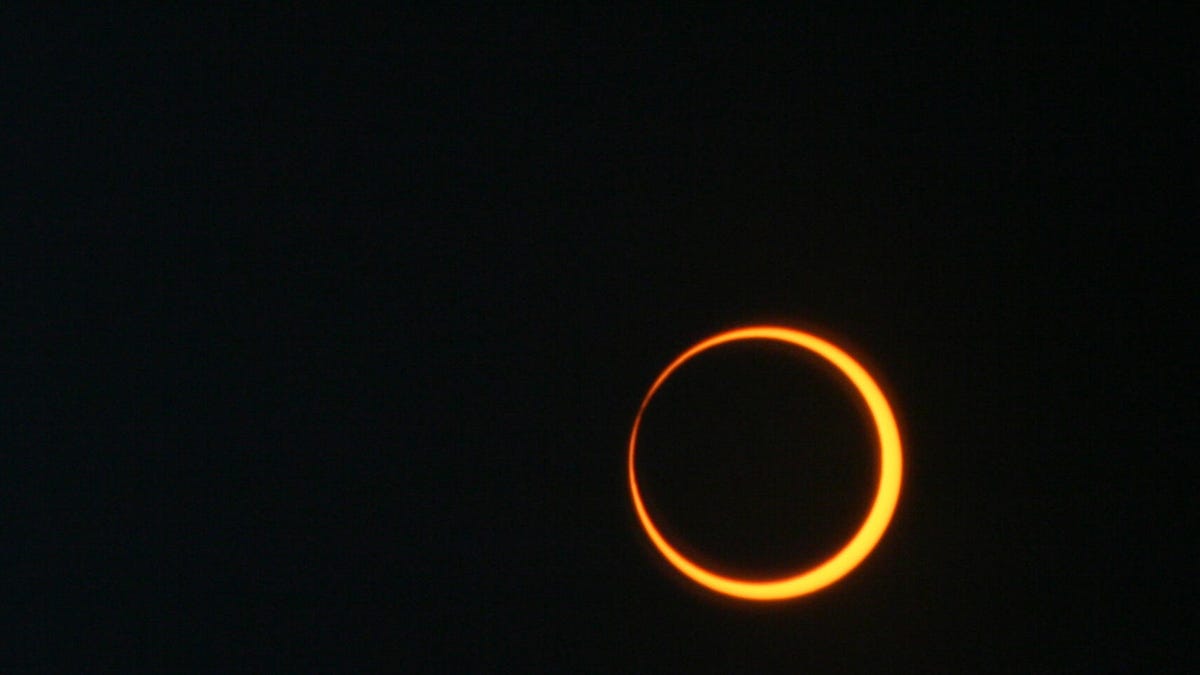Get Ready Now for Rare 'Ring of Fire' Eclipse in October
From Oregon to Texas, skygazers will be able to see the fiery sight. But don't forget to wear eye protection.

This NASA photo shows an annular solar eclipse photographed in 2012.
Start humming that Johnny Cash hit Ring of Fire and mark your calendars, sky-gazers. In under a month, on Oct. 14, an annular solar eclipse dubbed the "ring of fire" eclipse will be visible in eight US states, parts of Mexico, and many parts of South and Central America.
The eclipse will be viewable by millions of people, and folks who can't see it where they live can watch NASA's online broadcast. People in south Texas are exceptionally lucky. As Space.com points out, they can see not only the Oct. 14 annular solar eclipse, but also a total solar eclipse a few months later, on April 8, 2024.
Annular solar eclipse? Don't be confused: The word "annular" may look like "annual," but it refers instead to an eclipse where the moon passes between the sun and Earth but is just far away enough in its orbit that the sun isn't completely covered. The result is a large, bright ring in the sky, leading to the "ring of fire" nickname.
The path of the Oct. 14 eclipse cuts a narrow swath through eight states from Oregon -- even passing over scenic Crater Lake -- to Texas. Oregon watchers can see it beginning at 9:13 a.m. PT, and Texas viewers get the last American look, ending at 12:03 p.m. CT. The eclipse then moves on to Mexico and Central and South America.
The eclipse also overlaps with the Albuquerque International Balloon Festival, which runs from Oct. 7-15.
People who wish to see the ring of fire itself will need to be within the 125-mile path of annularity, and those closest to the center of the path will be rewarded with a longer viewing time.
If you aren't in the path of the eclipse, you can watch online with NASA's live YouTube broadcast, scheduled for Oct. 14 from 10:30 a.m. CT to 12:15 p.m. CT.
Noting that it isn't safe to look directly at an annular eclipse without specialized eye protection, NASA offers safety guidelines to prepare for Oct. 14, 2023.
If you miss the October eclipse, start planning for April 8, 2024, when the aforementioned total solar eclipse will cross North America, passing over Mexico, the US and Canada. That event will begin over the South Pacific Ocean, pass over Mexico's Pacific coast, entering the US in Texas. It'll travel through Oklahoma, Arkansas, Missouri, Illinois, Kentucky, Indiana, Ohio, Pennsylvania, New York, Vermont, New Hampshire and Maine before entering Canada.
Before the October event, the last annular solar eclipse was in June 2021, but it wasn't visible from the US. It was visible in northern Canada.

